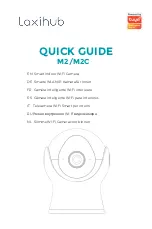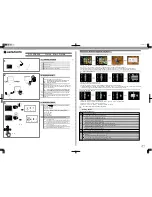
204
1.18.7
Working with several cameras simultaneously
•
Creating synchronized acquisitions using timers
(p.
1.18.7.1
Creating synchronized acquisitions using timers
1.18.7.1.1
Basics
Getting images from several cameras exactly at the same time is a major task in
• 3D image acquisitions
(the images must be acquired at the same time using two cameras) or
• acquisitions of larger objects
(if more than one camera is required to span over the complete image, like in the textile and printing industry).
To solve this task MATRIX VISION devices offer timers that can be used to generate pulse at regular intervals. This
pulse can be connected to a digital output. The digital output can be connected digital to the digital input of one or
more cameras to use it as a trigger.
1.18.7.1.2
Connecting the hardware
1.18.7.1.2.1
On the master camera
1. Connect power supply GND to
"pin 1"
and
"pin 7"
.
2. Connect power 12 V to
"pin 2"
and
"pin 10 (power supply for the outputs)"
.
3. Connect DigOut0 of master (
"pin 6"
) to DigIn0 of master (
"pin 4"
).
1.18.7.1.2.2
On each slave camera
1. Connect power supply GND to
"pin 1"
and
"pin 7"
.
2. Connect power 12 V to
"pin 2"
and
"pin 10 (power supply for the outputs)"
.
1.18.7.1.2.3
Between the cameras
1. Connect DigOut0 of master (
"pin 6"
) to DigIn0 of slave (
"pin 4"
).
Note
If more than one slave is used, connect the same
"pin 6"
of master to all
"pin 4"
of the slaves.
If each camera has its own power supply, then connect all grounds (GND) together.
MATRIX VISION GmbH
Summary of Contents for MATRIX VISION mvBlueNAOS
Page 1: ...mvBlueNAOS Technical Manual English Version 2 14...
Page 2: ......
Page 8: ......
Page 22: ...14 MATRIX VISION GmbH...
Page 183: ...1 18 Use Cases 175 Figure 2 Sample settings MATRIX VISION GmbH...
Page 286: ...278 Test setup front side MATRIX VISION GmbH...
Page 292: ...284 MATRIX VISION GmbH...
















































